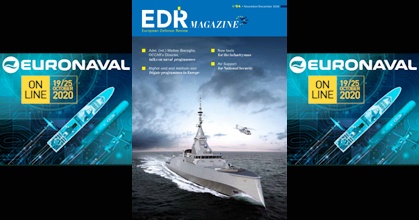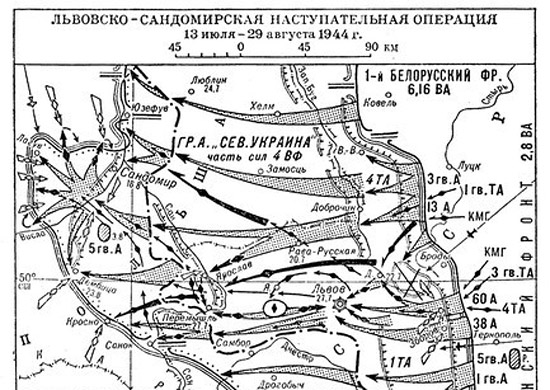
Euronaval Online 2020 Virtual ships, virtual exhibitors
The SMX 31E concept submarine unveiled by Naval Group continues the vision of its predecessor, but in a shape more in line with the technical capabilities of the future. One of the most important messages of the project is the idea of a fully electric submarine, with parameters exceeding the current conventional units and similar to nuclear powered ships.
The global COVID-19 pandemic, which paralyzed many areas of life, could not but affect the exhibitions. Major events such as the Eurosatory in Paris or the ILA in Berlin have been cancelled, while the very limited Kehl MSPO (more widely in WiT 10/2020) has taken place mainly due to the holiday easing of the disease. On September 17, the organizers of Euronaval, the French chamber of shipbuilders GICAN (Groupement des Industries de Construction et Activités Navales) and its subsidiary SOGENA (Société d'Organisation et de Gestion d'Evènements Navals), which is engaged in the international promotion of its products, continuing the intention to implement Euronaval. SOGENA also invited journalists, including our editorial staff, to take part in the usual tour before the exhibition, although for health reasons it was limited to the Toulon region. Unfortunately, September brought a resurgence of the pandemic, forcing the organizers to reconsider their intentions almost at the last moment. On September 24, when about 300 exhibitors were registered, it was decided to change the nature of the event.
Landing craft-interceptor IG-PRO 31. This strange machine is mainly intended for operators of special forces. With the tracked undercarriage folded, it can move at speeds of over 50 knots.
A digital formula was adopted whereby exhibitors, politicians, the military and journalists could communicate online through an online platform prepared in just a few weeks. In order to meet the needs of all stakeholders in the new reality, Euronaval 2020 lasted two days longer than usual, from 19 to 25 October. During this time, 1260 business and business and government meetings, as well as conferences, webinars and master classes were held. An interesting consequence of this was an increase in the number of virtual participants in some meetings compared to the results of the "real" counterparts of previous years. The new formula also helped the smallest companies, usually less visible among the big stands of big players. Ultimately, Euronaval 2020 brought together 280 exhibitors, including 40% foreign exhibitors from 26 countries, 59 official delegations from 31 countries, more than 10 visits to the Euronaval Online platform and about 000 visits to the exhibitor's website. The event was reported by 130 accredited journalists.
Surface ships
French, Italian and Israeli companies were the most active in Euronaval Online, while American or German companies were much less active. And although the Minister of the Armed Forces of the French Republic, Florence Parly, began her opening speech with a strong accent, stating that “this program (we are talking about the PANG nuclear aircraft carrier - Porte-avions de nouvelle génération -
- for the marines, n. ed.) will be implemented in 2038 as a successor to the Charles de Gaulle, it was difficult to find a premiere of large displacement ships. This is the result of a situation in which the most important modernization projects of European fleets in the frigate class have been carried out for some time. Nevertheless, among the smaller units there are also interesting ones.
The European Patrol Corvette (EPC) program is being accelerated by France, Greece, Spain, Portugal and Italy (coordinator country) under the European Union's Permanent Structured Cooperation (PESCO). The EPC began with the signing of a Memorandum of Understanding between France and Italy in June 2019 and was approved under PESCO in November. As has repeatedly happened in European defense programs, at least three types of EPC will be created - patrol for Italy and Spain, patrol for extended range for France and faster and more heavily armed for Greece. For this reason, the platform must have a modular structure, adaptable in terms of combat system and power plant. Its design is to be built on Naviris (a joint venture between Naval Group and Fincantieri) and submitted for approval next year with funding from the European Defense Fund (EDF). Detailed requirements should be formulated by the end of this year, but based on the information currently available, it is known that the Italian and Spanish versions are a ship with sensors and weapons optimized to counter surface and air targets (point defense) and, to a limited extent, under the water. Diesel-electric drive CODLAD should provide a speed of 24 knots, and the French version - a cruising range of 8000-10 nautical miles. The Greeks are probably counting on higher speed, which will force them to change the propulsion system to the CODAD internal combustion engine, which will enable the development of the 000th century. The Italians want to replace the patrol ships of the Comandanti and Costellazioni type with eight EPCs, the first of which will start the campaign in 28. Six French units will replace the Floréal type in overseas departments from 2027. The flexibility of the structure is also intended to facilitate its transformation to meet the needs of export clients.
In addition to the EPC, the French initiated a recruitment program from the PO (Patrouilleurs océanique) series of 10 ocean-going patrol ships for service in the metropolis. Finally, the last, almost 40-year-old notices of the A69 type and younger patrol ships of the public service PSP (Patrouilleurs de service public) of the Flamant type will be issued. They will be used to support deterrence, presence in areas of interest, population evacuation, escort, intervention, and other Parisian maritime activities. They should have a displacement of 2000 tons, a length of about 90 m, a speed of 22 knots, a cruising range of 5500 nautical miles and an autonomy of 40 days. The project provides for a 35-year operational life with a minimum availability of 140 (expected 220) days at sea and only 300 days per year. Launched in June this year, the initial stage is being implemented on the basis of design proposals by Naval Group and smaller, but specialized in the construction of ships of this class, shipyards: SOCARENAM (it will be the one that will build the OPV for the Maritime Border Guard Department, see WiT 10/2020), Piriou and CMN (Constructions mécaniques de Normandie) and a decision on the industrial organization of the project will be made with an implementation phase in 2022 or 2023.

